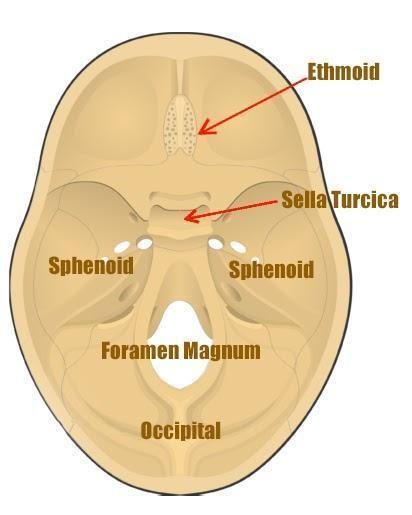
Sella turcica is
(a) Band connecting cerebral hemispheres
(b) Foramen of skull
(c) Skull depression for lodging pituitary
(d) Lodging of heart
Answer
420k+ views
1 likes
Hint: Sella turcica is sometimes called hypophyseal fossa. It is a depression in the sphenoid bone that is shaped like a cup. The smallest endocrine gland resides in a bony cavity called sphenoid bone sella turcica and is connected by a stalk to the hypothalamus.
Complete answer:
A depression at the base of the skull where the pituitary gland is located is called the sella turcica (the Turkish saddle) due to its similarity to a saddle used by the Turks which had supports in the front and back. This depression is in the middle of the cranial cavity, at the base of the skull. For the pituitary gland the sella turcica forms a bony bench.
It constitutes the hypophyseal fossa with its dura mater covering which accommodates the hypophysis or pituitary gland. Pituitary gland (hypophysis) present under the hypothalamus and named ‘the master gland of the body’. An empty Sella turcica is a condition in which this depression fills up with cerebrospinal fluid.

So, the correct answer is, 'Skull depression for lodging pituitary'.
Note:
There is a small, bony nook at the base of your brain inside your skull which holds and protects your pituitary gland (which controls how hormones function in your body). This tiny structure is called sella turcica.
It is a saddle-like, bony structure on the upper sphenoid bone body surface. The anterior border of the sella turcica is marked by the dorsum sellae with the tuberculum sellae and the posterior border. The hypophyseal gland is surrounded by the sella turcica, while over the pituitary fossa two anterior and posterior clinoid processes project.
Complete answer:
A depression at the base of the skull where the pituitary gland is located is called the sella turcica (the Turkish saddle) due to its similarity to a saddle used by the Turks which had supports in the front and back. This depression is in the middle of the cranial cavity, at the base of the skull. For the pituitary gland the sella turcica forms a bony bench.
It constitutes the hypophyseal fossa with its dura mater covering which accommodates the hypophysis or pituitary gland. Pituitary gland (hypophysis) present under the hypothalamus and named ‘the master gland of the body’. An empty Sella turcica is a condition in which this depression fills up with cerebrospinal fluid.

So, the correct answer is, 'Skull depression for lodging pituitary'.
Note:
There is a small, bony nook at the base of your brain inside your skull which holds and protects your pituitary gland (which controls how hormones function in your body). This tiny structure is called sella turcica.
It is a saddle-like, bony structure on the upper sphenoid bone body surface. The anterior border of the sella turcica is marked by the dorsum sellae with the tuberculum sellae and the posterior border. The hypophyseal gland is surrounded by the sella turcica, while over the pituitary fossa two anterior and posterior clinoid processes project.
Recently Updated Pages
Master Class 11 Economics: Engaging Questions & Answers for Success

Master Class 11 Business Studies: Engaging Questions & Answers for Success

Master Class 11 Accountancy: Engaging Questions & Answers for Success

Master Class 11 English: Engaging Questions & Answers for Success

Master Class 11 Computer Science: Engaging Questions & Answers for Success

Master Class 11 Maths: Engaging Questions & Answers for Success

Trending doubts
State and prove Bernoullis theorem class 11 physics CBSE

1 ton equals to A 100 kg B 1000 kg C 10 kg D 10000 class 11 physics CBSE

State the laws of reflection of light

One Metric ton is equal to kg A 10000 B 1000 C 100 class 11 physics CBSE

Difference Between Prokaryotic Cells and Eukaryotic Cells

1 Quintal is equal to a 110 kg b 10 kg c 100kg d 1000 class 11 physics CBSE




